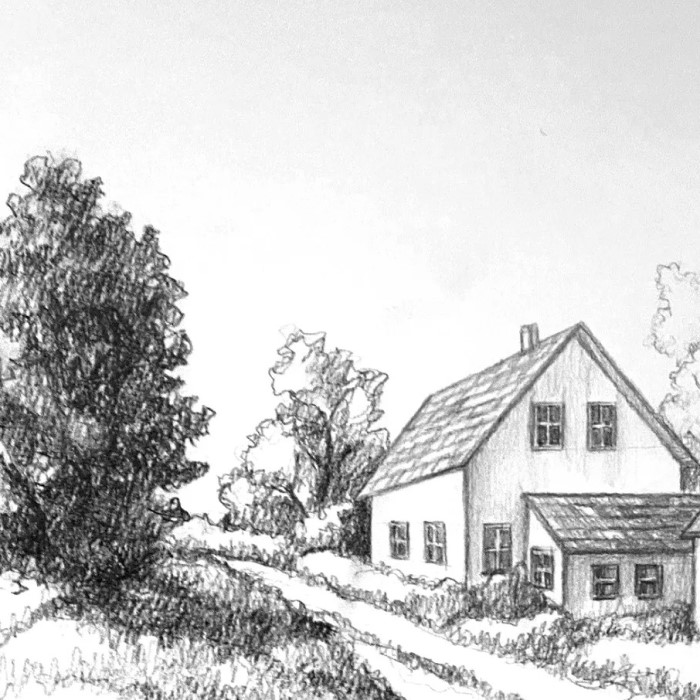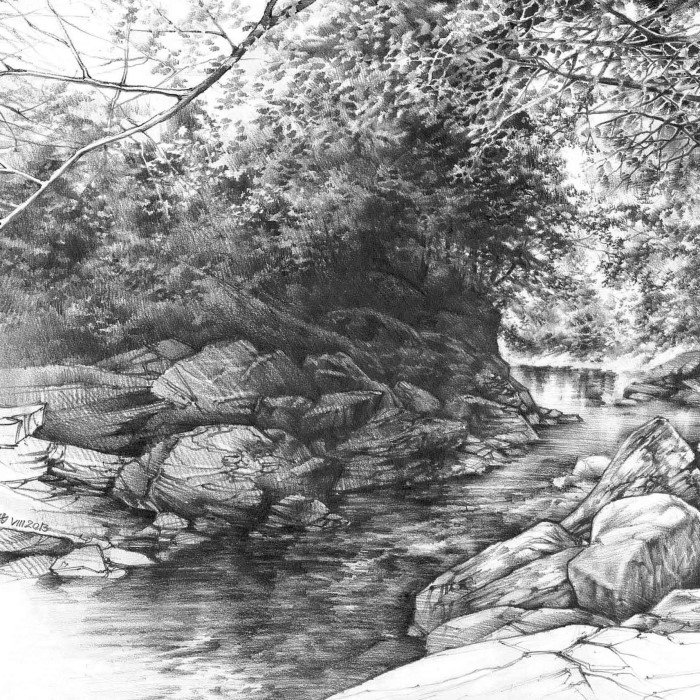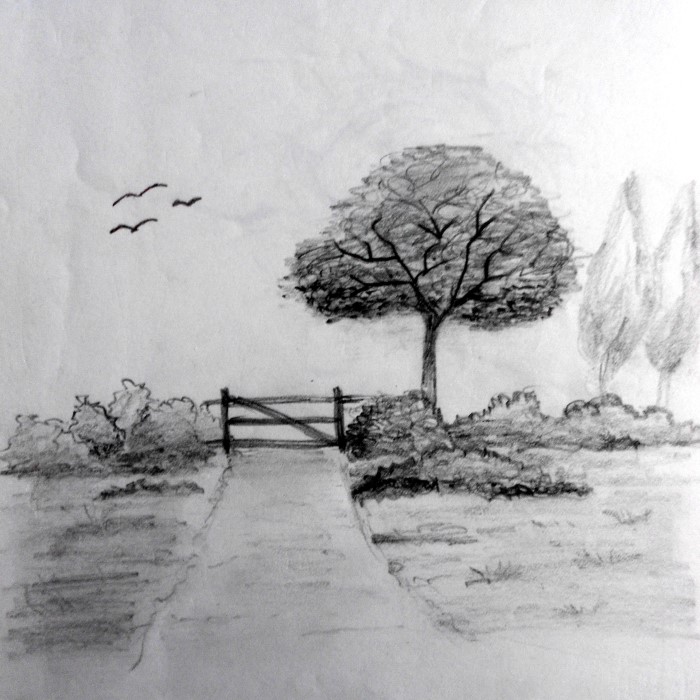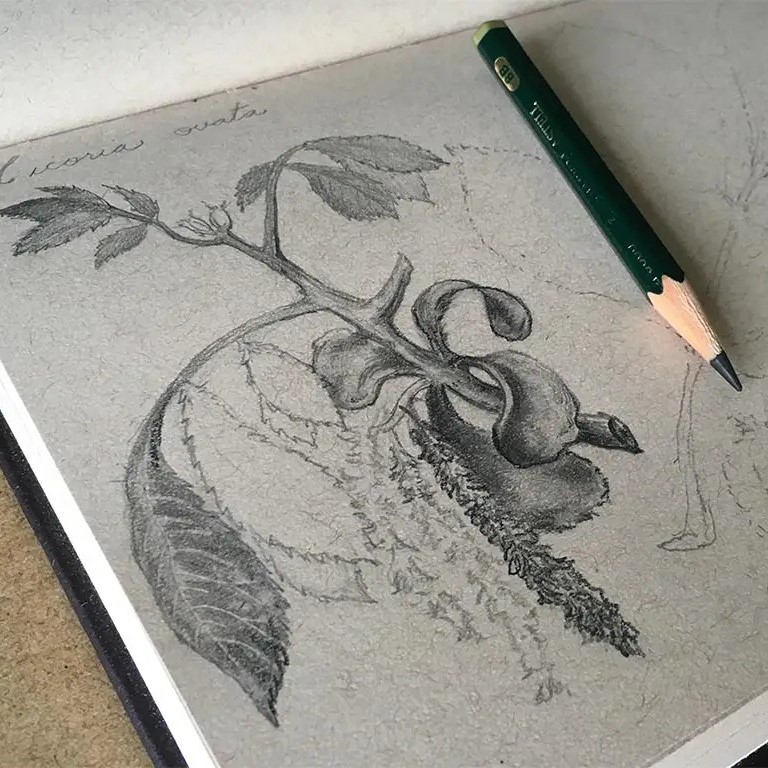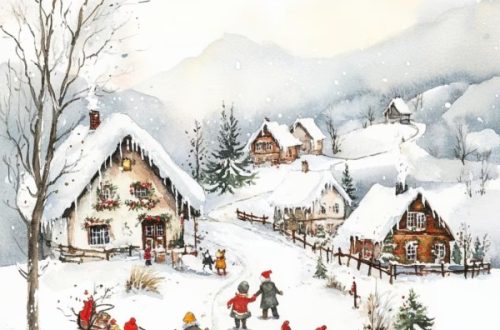Introduction
Nature pencil drawing captures the beauty of the natural world using pencil sketches. It allows artists to express realistic or stylized interpretations of landscapes, plants, and various outdoor settings. With minimal tools, this art style can bring intricate details to life and evoke emotions through simplicity.
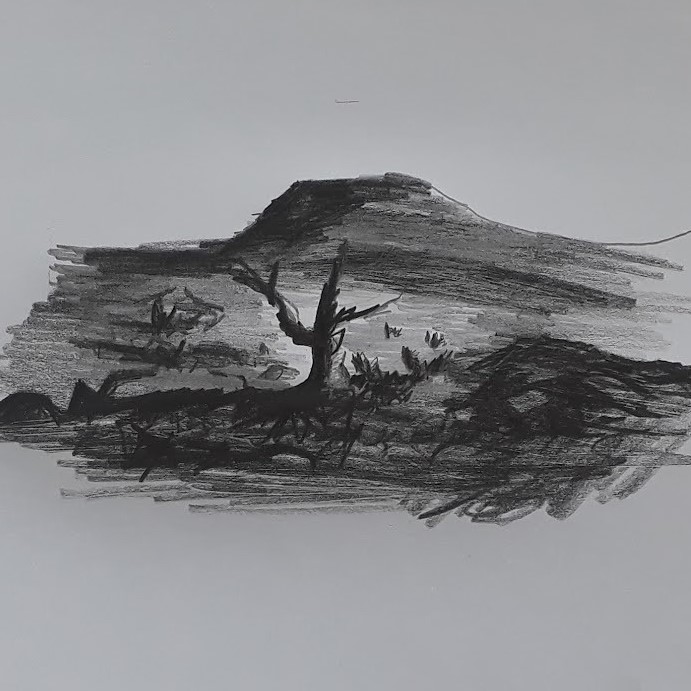
What is Nature Pencil Drawing?
Nature pencil drawing involves creating artistic depictions of outdoor elements like trees, flowers, and rivers. Artists rely on pencils to shade, texture, and define the shapes found in nature. Different techniques are employed to emphasize realism or abstraction, depending on the desired outcome. This method celebrates the raw beauty of nature through monochromatic illustrations.
Benefits of Sketching Nature Scenes
Sketching nature scenes offers numerous mental and creative advantages:
- Improves observation skills: It encourages closely studying details in plants, landscapes, and textures.
- Enhances creativity: Artists experiment with styles and techniques while capturing nature.
- Relieves stress: Focusing on drawing helps calm the mind and fosters mindfulness.
- Boosts technical skills: It builds precision and shading abilities vital for all types of drawing.
- Connects you with nature: Spending time sketching outdoors strengthens appreciation for the environment.
Nature pencil drawing is not just an artistic practice—it’s a rewarding way to explore creativity and sharpen skills. Mastering this art can deepen your connection to the world around you and expand your artistic horizons.
Essential Tools and Materials
Quality tools ensure your nature pencil drawings shine with detail and precision. Investing in the right materials helps you work efficiently and achieve professional results.
Choosing the Right Pencils for Nature Drawings
Pencils are the primary tools for nature sketching. Selecting the right types is essential for success:
- Graphite pencils: Range from hard (H) to soft (B). Use HB for basics and 4B or higher for deeper shading.
- Colored pencils: Add subtle hues for enhanced realism or artistic flair.
- Mechanical pencils: Offer sharp, consistent lines for intricate details like leaves and tree bark.
- Charcoal pencils: Perfect for dramatic contrasts and bold texturing in landscapes.
Experiment with pencil grades to find the best match for your preferred style.
Importance of Quality Paper and Erasers
Paper choice impacts the final appearance and durability of your artwork:
- Drawing paper: Opt for acid-free, medium-grain paper. It supports smooth pencil work and preserves drawings over time.
- Sketch pads: Provide convenience for outdoor use and daily practice.
- Erasers: Invest in kneaded erasers and vinyl erasers to correct mistakes effectively. Kneaded erasers shape easily for precise corrections.
- Blending tools: Use tortillions or blending stumps to smooth shading transitions for realistic textures.
Good paper and erasers enhance every stroke and protect your final pieces.
Additional Supplies for Enhancing Your Artwork
Expand your toolkit with supplementary materials for versatility and refined results:
- Sharpener: Ensure pencils stay sharp for detailed work. Opt for high-quality, durable designs.
- Rulers: Assist with creating straight lines and accurate perspectives in landscapes.
- Fixatives: Spray fixatives preserve your artwork, preventing smudges and fading.
- Portable easel: Useful for outdoor sketching sessions.
These additions make your nature drawing process efficient and enjoyable. Equip yourself thoroughly and let your creativity flourish.
Fundamental Techniques for Nature Drawing
Mastering fundamental techniques is essential for creating captivating nature pencil drawings. These methods help artists build strong compositions and achieve refined results.
Sketching Basic Shapes Found in Nature
Nature drawings often begin with simple shapes.
- Start with circles and rectangles: Use these to sketch trees, rocks, and other elements.
- Observe symmetry: Notice patterns in leaves, flowers, and landscapes.
- Refine outlines: Gradually adjust shapes to match natural forms and proportions.
Sketching basic shapes forms the foundation for detailed illustrations.
Shading and Texturing for Realism
Shading brings depth and texture to nature scenes.
- Vary pressure: Light strokes for highlighting and firm strokes for shading.
- Use blending tools: Smooth transitions with tortillions or blending stumps.
- Experiment with textures: Mimic tree bark, water ripples, or grass blades.
Focus on creating contrast and intricate details to make scenes look lifelike.
Creating Depth and Perspective in Landscapes
Depth and perspective add dimension to your drawings.
- Layer elements: Overlap features like trees and hills for a realistic view.
- Study vanishing points: Anchor distant objects with accurate perspective lines.
- Adjust tones: Use lighter tones in the background and darker tones upfront.
These techniques immerse viewers in the natural environment you sketch.
Learning and practicing these techniques will improve your nature pencil drawing skills and bring beauty to your art.
Drawing Different Elements of Nature
Nature pencil drawing includes various elements like trees, water features, rocks, and plants. Each component requires specific techniques to capture its unique characteristics and beauty. Skillfully depicting these elements enhances the visual impact of your artworks.
Sketching Trees and Forest Scenes
Trees and forests are central motifs in nature drawing. Focus on these techniques:
- Understand shapes and structures: Begin with simple outlines to form trunks and branches.
- Observe texture: Detail tree bark using short lines and varied pencil pressure.
- Layer foliage: Use overlapping strokes to simulate leaves. Work from dense to sparse sections.
- Add shadows: Shade based on light direction to create realism and depth.
Sketching trees well requires patience and attention to intricate details like leaves and branches.
Capturing Water Features like Rivers and Lakes
Water elements, such as rivers and lakes, require careful shading and texturing. Use these methods:
- Highlight ripples: Draw curved or wavy lines for flowing water.
- Blend tones: Use blending tools for smooth transitions and reflections.
- Contrast depths: Add darker tones for deeper areas and lighter ones for shallows.
- Include surrounding details: Sketch rocks, grasses, and shorelines to contextualize the water.
Focus on dynamic flow and reflections to make water appear lifelike.
Drawing Mountains and Rocks
Mountains and rocks have rugged shapes and varied textures. Follow these techniques:
- Create bold outlines: Use sharp lines for rocky edges and peaks.
- Layer shading: Apply different shades to represent sunlight hitting surfaces.
- Texture surfaces: Use dots, lines, or smudging to mimic roughness.
- Include surrounding terrain: Add shrubs, slopes, or valleys for depth.
Accurate proportions and textures give these elements a more dramatic presence.
Techniques for Flower and Plant Illustrations
Flowers and plants add delicate beauty to your nature drawings. Emphasize these aspects:
- Define shapes and symmetry: Draw petals and leaves with precision.
- Vary shading: Use soft strokes for light areas and firm ones for shadows.
- Add veins and details: Include intricate lines for realism.
- Capture natural curves: Highlight graceful movements in stems and leaves.
Careful observation ensures balanced compositions and lifelike floral sketches.
Mastering how to draw different elements allows you to create compelling nature pencil drawings. Dedicate time to practice and refine your technique for each component.
Tips for Improving Your Skills
Improving your nature pencil drawing skills requires regular practice and learning new techniques. Adopt diverse approaches to refine your artistry and gain confidence.
Observing Nature Closely for Details
- Study textures and patterns: Look at leaves, bark, and water ripples carefully.
- Pay attention to light: Observe how sunlight impacts shadows and highlights.
- Sketch outdoors: Spend time in natural settings to draw directly from life.
- Use reference photos: Capture fine details that may be overlooked while sketching live scenes.
Detailed observation enhances your ability to replicate nature accurately in drawings.
Practicing Daily and Experimenting with Styles
- Set daily goals: Dedicate time to focus on specific elements like trees or flowers.
- Explore techniques: Try cross-hatching, stippling, and blending to find a style that suits you.
- Redraw older works: Compare your progress over time by reworking past sketches.
- Join art challenges: Participate in events to push your limits and develop discipline.
Consistent practice helps hone your skills and discover what makes your art unique.
Learning from Other Artists’ Works
- Study famous pieces: Analyze how accomplished artists depict nature.
- Watch tutorials: Learn advanced methods to expand your knowledge.
- Join art communities: Share feedback with peers to gain fresh insights.
- Attend workshops: Learn directly from experienced artists for hands-on guidance.
Learning from others accelerates your progress and exposes you to diverse artistic perspectives.
By observing closely, practicing every day, and learning from others, you can steadily develop your nature pencil drawing skills.
Common Challenges and How to Overcome Them
Nature pencil drawing has its challenges, but with practice, you can overcome them. Addressing issues like proportions, lighting, and patience is crucial for improvement.
Dealing with Proportions and Scale Issues
- Start with guidelines: Use light pencil strokes to outline basic shapes and sizes.
- Compare elements: Constantly check sizes of objects against each other as you draw.
- Use a grid method: Divide your drawing and reference image into equal sections for accuracy.
- Practice frequently: Sketch objects with varying sizes to improve your proportion skills.
Proportions improve with observation and consistent practice.
Realizing Correct Lighting and Shadows
- Study light sources: Observe the direction and strength of natural light.
- Practice shading: Layer strokes lightly and build depth with darker tones gradually.
- Blend carefully: Use blending stumps for smooth shadow transitions.
- Highlight contrasts: Define highlights to enhance the effects of light and shadow.
Focus on replicating how light naturally interacts with surfaces.
Maintaining Patience and Consistency
- Work step by step: Tackle one element of the drawing at a time.
- Take breaks: Step away to refresh your mind and avoid frustration.
- Set realistic goals: Divide your sketch into manageable tasks to avoid feeling overwhelmed.
- Celebrate progress: Appreciate small improvements in your work over time.
Patience is key to mastering nature pencil drawing techniques.
Advanced Techniques for Professional Artists
Expand your skills by applying advanced techniques to enhance your nature pencil drawings. These methods allow professional artists to push their creativity and deliver remarkable works.
Adding Dynamic Movements in Nature Drawings
Capturing movement adds life to nature sketches.
- Use curved lines: Draw flows to show wind, water, or foliage movements.
- Layer strokes: Overlap shapes to depict dynamic interactions, such as leaves fluttering.
- Highlight motion trails: Add subtle blur effects for moving objects like birds or streams.
- Study real-time action: Observe nature outdoors to replicate realistic motion.
Dynamic movements make drawings more engaging and lively.
Incorporating Mixed Media for Unique Effects
Combining different mediums adds texture and depth to artworks.
- Blend with ink: Use pens to outline details and create dramatic contrasts.
- Add watercolor washes: Apply soft colors for vibrant backgrounds and highlights.
- Experiment with charcoal: Incorporate bold tones for striking shadows and textures.
- Layer colored pencils: Enhance details and create realistic or imaginative effects.
Mixed media techniques broaden creative possibilities and enrich your nature pencil drawings.
Preparing Nature Pencil Drawings for Exhibition
Presenting artwork professionally showcases your talent.
- Select top pieces: Choose works that highlight your skills and unique style.
- Frame drawings: Use acid-free mats and frames for preservation and presentation.
- Write descriptions: Add titles and briefs to explain your artistic vision.
- Arrange lighting: Ensure proper illumination to highlight textures and tones.
- Market effectively: Engage audiences through art fairs or galleries to gain exposure.
Exhibiting your nature pencil creations elevates their impact and connects you with admirers.
Advance your artistic journey by mastering these techniques and sharing your talent with the world.
Encouragement for Artists
Why Nature Pencil Drawing is a Rewarding Hobby
Nature pencil drawing offers creativity, relaxation, and connection with the environment. It helps artists express themselves uniquely. Sketching nature boosts mindfulness, improving mental well-being and reducing stress. Observing nature closely strengthens appreciation for its beauty. The simplicity of tools makes this art accessible to all skill levels. Regular practice improves technical skills, enabling detailed compositions. Nature pencil drawing combines artistic value with emotional rewards, making it a fulfilling activity.
Continuing Growth and Exploration in Art
Keep learning and experimenting to grow as an artist. Try new techniques to broaden your skills. Study different natural scenes to explore varied textures and forms. Redraw old sketches to observe progress and refine your abilities. Engage with art communities for feedback and inspiration. Set challenges to push limits and develop consistency. Explore mixed media to expand creativity and create unique effects. Nature pencil drawing is a lifelong journey of exploration and improvement. Dedicate time and embrace the process to achieve lasting growth.
Conclusion
In conclusion, mastering nature pencil drawing techniques requires dedication, practice, and a keen sense of observation. By embracing various techniques, utilizing the right tools, and continually seeking inspiration, you can take your drawing skills to the next level. Remember, art is about expression and exploration, so allow yourself the freedom to experiment and evolve. As you enhance your nature pencil drawing skills, you’ll not only improve your technique but also enrich your appreciation for the beauty of nature. Dive into the world of nature pencil drawing and let your creativity flourish!
